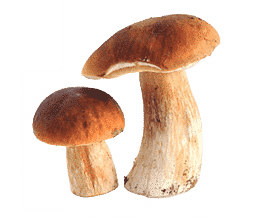
Liberty Cap Mushrooms: Your Ultimate Guide
Liberty caps, or Psilocybe semilanceata, are renowned for their unique appearance and powerful psychedelic effects. These wild mushrooms have captured the imagination of those seeking altered states of consciousness for centuries.
However, beyond their mystical allure, there’s a wealth of information to explore, such as their preferred habitats, identification tips, and the potential mind-bending experiences they can induce. Let’s delve in this full guide to liberty cap mushrooms.
Key Takeaways
Liberty caps have a conical or bell-shaped cap and a slightly thicker stem, making them stand out among other wild mushrooms. Accurate identification is crucial, as they have lookalikes that may be poisonous.
These mushrooms grow in grasslands and meadows across Europe, North America, and beyond, especially in damp, decaying organic matter during the autumn months.
Liberty caps are a type of psilocybin mushroom known for their powerful hallucinogenic properties, leading to altered perceptions, intense emotions, and vivid visual experiences.
What Are Liberty Cap Mushrooms?
Liberty cap mushrooms (Psilocybe semilanceata) belong to the genus Psilocybe mushrooms, which includes various psilocybin-containing mushrooms. They’re small, with a distinctly pointed cap that resembles—you guessed it—a tiny liberty cap. These mushrooms are found primarily in grasslands and thrive in areas with decaying grass roots and other organic matter.
Psilocybin mushrooms like the liberty cap have a long history of use, particularly for their hallucinogenic properties. When consumed, they can alter perception, enhance emotions, and induce vivid hallucinations. But their allure isn’t just about the trip—they’re an exciting mushroom species to identify and understand.
Where Do Liberty Caps Grow?
Liberty cap mushrooms are found primarily in grasslands, pastures, and meadows. They thrive where livestock grazes, often feeding on decaying organic matter near the grassroots.
The mushrooms pop up in late summer through autumn, especially after periods of rainfall, when conditions are just right for spores to mature. Interestingly, liberty caps aren’t limited to one region.
You can find them across Europe, North America, and New Zealand. In Mexico, there’s a related variety called the Mexican liberty cap, though it differs slightly in appearance and habitat.
How to Identify Liberty Cap Mushrooms
Identifying liberty cap mushrooms is a must to avoid confusing them with other potentially harmful species. They have a few distinctive characteristics that make them easier to spot in the wild, but paying close attention to these features will help ensure you pick the right mushroom.
Stem
The stem of a liberty cap is long, thin, and slightly thicker at the base. It’s usually pale or off-white, with a somewhat slippery texture when fresh.
While delicate, the stem is fairly sturdy and can hold the mushroom’s cap upright, often making it stand out in grasslands. The stem also has a slight curve, giving the mushroom a unique, graceful appearance.
Mushroom Cap
The cap is what gives the liberty cap its name. It resembles the ancient liberty pole, shaped like a tiny bell or cone. The color ranges from pale brown to dark beige and lightens as the mushroom dries. The cap is smooth, and when it’s fresh and wet, it may appear slightly sticky.
As it dries, the cap shrinks and becomes more fragile, but the pointed tip remains a key identifying feature.
Gills
Underneath the cap, you’ll find the gills of the liberty cap mushroom. These gills are tightly packed and range from pale grayish to dark purplish-brown as the spores mature. These gills produce the spore print that helps with identification, and their color transformation is an important sign of maturity.
While many other wild mushrooms have gills, the color change in liberty caps is a clear indicator to look for.
Common liberty caps look like?
Liberty caps can be tricky to identify because they share similarities with other mushroom species, some of which are non-psychoactive or toxic.
Here are a few common mushrooms that are often confused with liberty caps:
1. Protostropharia semiglobata
Protostropharia semiglobata is a common mushroom that can appear similar to liberty caps, particularly in grasslands. It has a dome-shaped, yellow-brown cap and grows in fields and pastures. However, Protostropharia semiglobata lacks liberty caps’ pointed, conical cap characteristic.
Additionally, it does not contain psilocybin and is not psychoactive. While not dangerous, mistaking this for a liberty cap will lead to disappointment as it won’t produce any hallucinogenic effects.
2. Panaeolous Species
Panaeolous mushrooms, particularly Panaeolous cinctulus and Panaeolous foenisecii, are another group that can be mistaken for liberty caps. These species grow in grassy areas, often alongside liberty caps, and have a similar bell-shaped cap.
However, Panaeolous species typically have darker, more mottled gills and caps that are smoother than the pointed, bell-like caps of liberty caps. Some Panaeolous species are mildly psychoactive, but they generally contain lower concentrations of psilocybin and do not produce the same intensity of effects as liberty caps.
3. Conocybe Species
Conocybe species, particularly Conocybe tenera, are small brown mushrooms that can resemble liberty caps at first glance. They grow in similar environments, such as grassy fields and lawns, and feature a slender stem and small cap.
However, Conocybe mushrooms are typically more fragile, and their caps are bell-shaped, without the distinctive pointed tip of liberty caps. Some Conocybe species are toxic, making it important to distinguish them from liberty caps, as ingesting them could lead to severe health consequences.
Health Benefits of Liberty Cap Mushrooms
1. Mental Health and Well-being
Studies have shown that psilocybin, the active compound in liberty cap mushrooms, may help alleviate symptoms of depression, anxiety, and PTSD. By promoting deep introspection and altering perception, psilocybin may help individuals process unresolved emotions or trauma.
Research indicates that it could be a promising alternative for those who have not responded well to traditional therapies.
2. Potential Treatment for Addiction
Psilocybin mushrooms, including liberty caps, have been studied for their ability to help people overcome addiction. Some research suggests that psilocybin can disrupt unhealthy thought patterns, making it easier for individuals to break free from addictions like smoking, alcohol, or drugs.
It works by resetting brain connections and allowing for new ways of thinking.
3. Increased Emotional Insight
Another benefit is the increased emotional insight that psilocybin can provide. Liberty cap mushrooms often lead to a profound sense of connectedness and clarity.
This emotional clarity can foster personal growth, improved relationships, and a better understanding of oneself. Many users feel more empathetic, present, and emotionally open after using liberty caps in a controlled setting.
While these potential health benefits are promising, it’s important to note that liberty cap mushrooms should only be used under professional guidance, particularly when addressing mental health conditions. Misuse can lead to negative experiences or exacerbate underlying issues.
How to Take Liberty Cap Mushrooms?
Aking liberty cap mushrooms can be done in various ways, depending on personal preference and desired effects. Here are the most common methods people use:
1. Eating Them Fresh
One of the simplest ways to take liberty cap mushrooms is by eating them fresh. After harvesting, you can consume the mushrooms as is.
However, due to their natural taste, often described as earthy or slightly bitter, some people prefer to mix them with food to mask the flavor. Popular options include eating them with peanut butter, cheese, or in a sandwich.
2. Drying and Eating Them
If you don’t plan to use the mushrooms later, drying them is a common method for long-term storage. Once dried, liberty caps are more potent per gram than their fresh counterparts because water weight has been removed.
You can eat dried mushrooms directly, but many people prefer to grind them into a powder and add them to smoothies, yogurt, or food.
3. Making a Mushroom Tea
Another popular option is mushroom tea, which many find more accessible on the stomach. To make it, grind the dried mushrooms into small pieces, then steep them in hot (but not boiling) water for about 10-15 minutes.
You can add honey, lemon, or ginger to improve the flavor. Drinking tea allows for a smoother onset of effects, and many people prefer it for the calming experience.
4. Capsules
Some people make or buy mushroom capsules for those looking for a controlled dosage. The dried mushrooms are reduced to a fine powder and enclosed within capsules for the ease of consumption.
This method allows for more precise dosing, especially if you’re taking mushrooms for therapeutic reasons.
5. Adding to Food or Drinks
You can incorporate liberty caps into food or drinks, like blending dried mushrooms into smoothies or soups. However, heat can degrade psilocybin, so it’s important to avoid high temperatures when preparing them this way.
Cold preparations like smoothies or salads are a popular choice.
Dosage and Caution
Regardless of your chosen method, starting with a low dose is essential, especially if you’re new to liberty caps. Psilocybin mushrooms can have powerful effects, and it’s wise to begin with a small amount, observe how your body reacts, and adjust accordingly.
Always be mindful of your setting and mental state before taking them, and consider having a trusted person nearby for support, especially if it’s your first time.
Are Liberty Cap Mushrooms Legal?
The legality of liberty cap mushrooms (Psilocybe semilanceata) varies by country and region. In many places, including the United States (at the federal level), the United Kingdom, and Canada, they are illegal due to their psilocybin content, classified as a controlled substance.
However, some areas have decriminalized or allowed regulated use, such as Oregon in the U.S. and certain cities like Denver and Oakland. In the Netherlands, while the mushrooms are illegal, “magic truffles,” which also contain psilocybin, are legally sold. Always check local laws, as regulations differ widely.
Generally
Liberty cap mushrooms are more than just psychedelic; they’re a fascinating part of grassland flora with a unique natural place. From identifying them by their slightly thicker stems to understanding their habitat in acidic soils, there’s much to appreciate about these hallucinogenic mushrooms.
Whether you’re interested in the effects of magic mushrooms or want to learn more about this known psilocybe species, always remember: safety first! Correctly identifying liberty caps and being mindful of poisonous species is crucial.
And if you’re ever in doubt, consult an expert before consuming anything you find in the wild.




